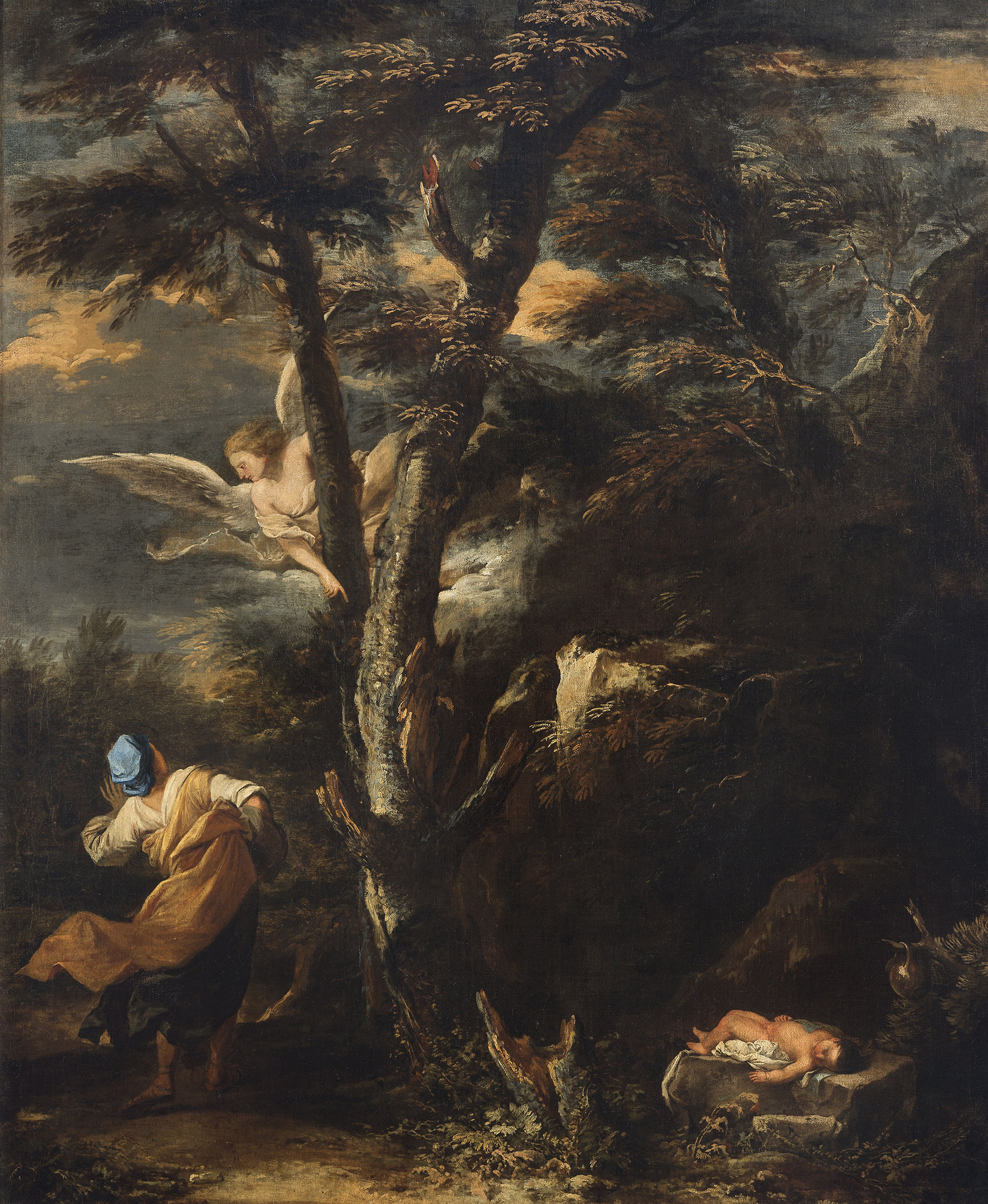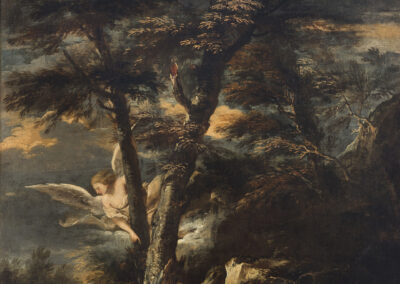Salvatore Rosa illustrates with this scene the moment when the angel of the Lord, alerted by the crying of the child Ishmael, appeared in the desert to his mother, the slave girl Hagar - where they had been expelled by Abraham, her owner and father of the child - to point out a stream to quench her son's thirst and to promise her that his descendants would be innumerable (Gn 21:17-19).
Caterina Volpi (2014) identifies this painting with "...".The painting of Hagar and Ishmael with original country of Sig.r Salvatore Rosa palm cloth 7"The painting is quoted in the post-mortem inventory of 1682 by the Neapolitan priest and friend of Salvatore Rosa, Girolamo Mercuri. Like the other paintings in the collection, the artist himself commissioned Francesco Martinotti to copy it in November 1671, a replica of which must be the one now in the National Gallery in London. For this reason it is not possible to know whether, on Mercuri's death, it was the copy or the original that remained in his collection. In any case, by an as yet unknown route, the original passed into the collection of the 9th Duke of Medinaceli, who arrived in Italy in 1684 as Captain General of the Naples Galleys and three years later was appointed ambassador to Rome. In the inventory of his nephew and successor, Nicolás Fernández de Cordoba, (Vicente Lleó Cañal, 1989) it appears under number 50 with the following description: "The original is not yet known.Another one of Salvator Rossa with a landscape and figures, two rods high and one and a half rods wide, carved and gilded frame."
Volpi considers it significant that the copy in the National Gallery was once attributed to Pietro Testa, whom Rosa knew and frequented from his first stay in Rome and whose influence is evident in his painting from the 1650s. Luigi Salerno (1975) dated this canvas to the end of the painter's Neapolitan period, around 1639, due to its identification with Rosa's work on the same subject which, according to G.B. Passeri, Lanfranco acquired in Naples. Volpi, taking into account the pictorial freedom with which he treats the landscape, which tends towards a Romantic vision, and the dynamism created by the undulating movement of Hagar's dress, dates it to the Roman period after his return from Venice between 1662 and 1665.


